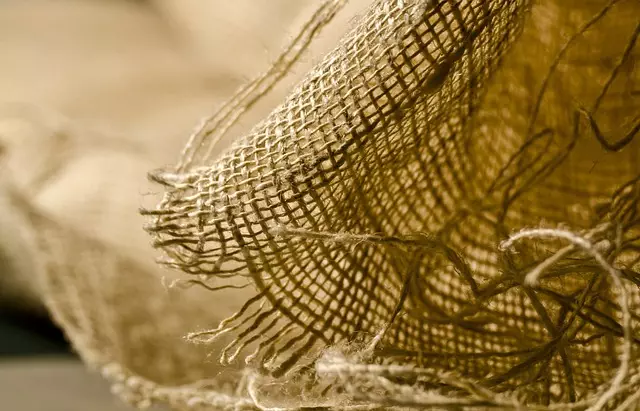Malaysian Kratom buds are recognized for their therapeutic benefits in muscle recovery and joint health, primarily due to alkaloids like mitragynine and 7-hydroxymitragynine, which may interact with opioid receptors to provide pain relief. These buds can stimulate the nervous system, enhancing circulation and promoting a healing environment, while also improving well-being and reducing discomfort during recovery. Their anti-inflammatory effects help decrease swelling and improve joint flexibility, and antioxidant properties aid in tissue repair by mitigating oxidative stress and supporting cellular health. However, it's crucial to consult healthcare professionals before using them, as they may interact with other treatments or be contraindicated for certain health conditions. Users should start with a low dosage, understand the differences between strains like Bali and Maeng Da, and source high-quality, organic buds from reputable suppliers. Regular monitoring of one's health response is necessary, along with adherence to safety and efficacy standards, to use Malaysian Kratom Buds effectively and safely in injury prevention and management regimens. Users should be mindful of the potential for dependency and always follow medical advice and dosing guidelines.
Exploring the multifaceted benefits of Malaysian Kratom Buds as a holistic strategy for injury prevention and management, this article delves into their unique properties and their role in fostering muscle recovery and joint health. With an emphasis on integrating these natural compounds into a safe and effective regimen, we guide readers through understanding the nuances of Malaysian Kratom Buds while highlighting best practices for their use. Join us as we navigate this emerging field in the realm of sports medicine and personal well-being.
- Understanding Malaysian Kratom Buds: A Holistic Approach to Injury Prevention and Management
- The Role of Malaysian Kratom Buds in Enhancing Muscle Recovery and Joint Health
- Best Practices for Safely Integrating Malaysian Kratom Buds into an Injury Prevention and Management Regimen
Understanding Malaysian Kratom Buds: A Holistic Approach to Injury Prevention and Management

When incorporating Malaysian Kratom Buds into an injury prevention and management regimen, it is crucial to approach their use with a comprehensive understanding of their properties. These buds contain mitragynine and 7-hydroxymitragynine, alkaloids that have been studied for their potential analgesic and anti-inflammatory effects. For those who engage in activities prone to injury, such as athletics or manual labor, Malaysian Kratom Buds may offer natural support for pain relief without relying on conventional pharmaceuticals. The holistic benefits of kratom are not limited to pain management; its use can also be part of a broader strategy that includes proper nutrition, rest, and exercise to prevent injuries from occurring in the first place. When implementing Malaysian Kratom Buds into an injury prevention program, it is essential to adhere to recommended dosages and to consult with healthcare professionals, as individual responses to kratom can vary. Additionally, combining kratom with other evidence-based practices can enhance overall wellness and promote a swift return to optimal health for those who experience injuries. In the realm of injury management, Malaysian Kratom Buds may provide a natural alternative that complements conventional treatments, offering relief and facilitating recovery through their unique pharmacological actions. Users should be cautious and informed about the effects and potential interactions with other substances, ensuring safe use in conjunction with medical advice and a tailored injury management plan.
The Role of Malaysian Kratom Buds in Enhancing Muscle Recovery and Joint Health

Malaysian Kratom buds have garnered attention in the realm of natural remedies for muscle recovery and joint health due to their unique alkaloid profile. These buds contain a blend of mitragynine and 7-hydroxymitragynine, which are thought to interact with opioid receptors in the body, potentially offering analgesic effects that can aid in managing pain associated with muscle strains or joint inflammation. Additionally, these compounds may stimulate the nervous system, enhancing circulation and promoting a more conducive environment for healing. Users often report an increased sense of well-being alongside reduced discomfort, which can be beneficial during recovery periods.
Incorporating Malaysian Kratom buds into one’s regimen is a step that many individuals take to support their muscle recovery and joint health. The anti-inflammatory properties found within the buds may help reduce swelling and improve flexibility, which is crucial for athletes or those with active lifestyles. Moreover, the potential for these buds to enhance tissue repair could be attributed to their antioxidant effects, which might mitigate oxidative stress and support cellular health. As with any supplement, it’s important to consult with a healthcare provider before incorporating Malaysian Kratom into one’s wellness plan, ensuring that it complements other treatments and aligns with individual health needs.
Best Practices for Safely Integrating Malaysian Kratom Buds into an Injury Prevention and Management Regimen

When incorporating Malaysian Kratom Buds into an injury prevention and management regimen, it is imperative to adhere to best practices for safety and efficacy. The use of kratom, a plant-based alkaloid from the leaves of Mitragyna speciosa, has been traditionally associated with potential analgesic and anti-inflammatory properties, which may contribute to injury recovery and pain relief. For those considering integrating Malaysian Kratom Buds into their health regimen for injury management, it is crucial to start with a low dosage to gauge individual sensitivity. Consultation with a healthcare provider is essential beforehand to ensure that kratom does not interact adversely with other medications or conditions.
Furthermore, users should be aware of the specific strains available from Malaysian sources, as different strains may offer varying effects. For instance, strains such as Bali or Maeng Da are known for their stimulating and pain-relieving properties, while Indo or Thai strains might have a more balanced effect. It is advisable to purchase high-quality, organic Malaysian Kratom Buds from reputable vendors to avoid contaminants or adulterated products that could exacerbate injury or health issues. Regular monitoring of one’s response to kratom, including both physical and mental well-being, is necessary for safe and effective use as part of an injury prevention and management strategy. Additionally, users should be mindful of the potential for dependency and should approach the use of Malaysian Kratom Buds with caution and respect for its powerful nature. Proper dosing, adherence to recommended guidelines, and consistent medical oversight are key components in safely harnessing the benefits of Malaysian Kratom Buds for injury prevention and management.
Incorporating Malaysian Kratom Buds into injury prevention and management strategies can offer a holistic approach to enhancing muscle recovery and joint health. This article has delved into the multifaceted benefits of these buds, providing readers with a comprehensive understanding of their role in mitigating injury risks and facilitating healing. By adhering to best practices for safe integration, individuals may find that Malaysian Kratom Buds serve as a valuable addition to a comprehensive health regimen. It is clear that further research is warranted to fully elucidate the potential of these buds in this realm; however, the current evidence presents an encouraging perspective on their therapeutic applications for injury prevention and management.






